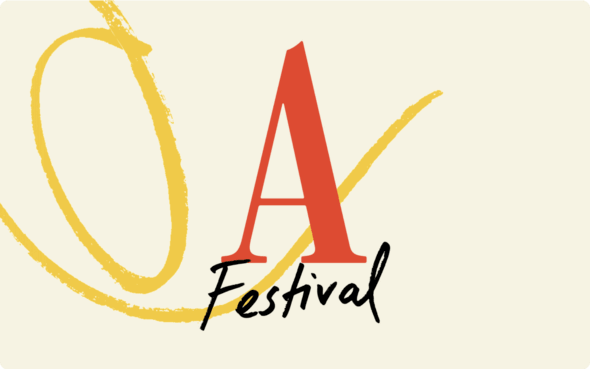Hopin is now RingCentral Events
You’re behind schedule on a major event. Each tick of the clock increases your stress level. That knot forms in your stomach. The wave of impending doom washes over you. Sound familiar?
Let’s tell it like it is: running low on time when you need it most is universally stressful. But, for events, a lack of time can seriously call into question whether the show will go on –– or not. For event professionals, not having enough time to plan and execute produces a kind of agony that’s as panic-inducing, as it is spirit-crushing.
Preserving our collective wellbeing should be paramount. So, why not avoid these not-so-enjoyable time crunches and emotions altogether? With that in mind, let’s talk lead time.
How far in advance should you start planning your event?
This is the question that can make all the difference. Whenever possible, give yourself the gift of more time rather than less. Having enough time to produce the caliber of event you want to put on can make or break the entire experience –– and dictate whether planning your event feels like a fulfilling, organized, step-by-step exercise, or a chaotic rollercoaster ride.
Assuming we’re aiming for the former sanity-saving scenario, when should you start planning your next event? The timing of your first steps varies based on the size and scale of your event. Makes sense, right? You’d probably need less time to train for a 5-kilometer race than you would to compete in a triathlon, for example. This concept holds true for events, which require intensive preparation (ideally minus the cardio, unless, of course, that’s your thing).
Use the below timeline to get an idea of when to begin the planning process for your next virtual, in-person, or hybrid event:

You know your events best, so think of what’s outlined above as a guidepost, not a set of hard-and-fast rules. Be sure to add some extra cushion to your event timeline when your experience is complex –– even if your attendee count isn’t high. Here are a few examples of when you might need that extra buffer time:
- When you’re planning immersive, shared, or hybrid event experiences for two geographically distinct audiences
- For extra logistical efforts that are commonplace when planning an in-person event
- When you’re part of an organization that requires legal review, corporate communications, as well as time for internal procurement processes and contract approvals
Beat the clock by breaking down the event planning timeline
Before we dive into the full breakdown, let’s discuss two things you’ll need to get started: an event brief and budget.
Your event brief serves as a decision-making guide for your event. It outlines how the shared experience you build will create value for attendees and what success looks like based on the event’s purpose, goals, and audience. So, you’ll want this in hand before diving in.
In conjunction with your brief, your event budget provides guardrails: Do you have the dollars to pull off your event? Will you offer paid tickets? Will sponsors help offset costs? How will this determine what you will or won’t be able to include in your event?
Your brief and budget should reflect and support each other. You wouldn’t outline a brief for an event you didn’t think you had the dollars to pull off. And, vice versa: you wouldn’t create a budget that’s based on an event you’d deem unfeasible to plan, right?
Once you have your event brief and budget in place, here are a few steps that can help you manage your lead time –– and make sure you have enough of it:

Step 1: Identify the date of your event and work backwards
Identifying your event’s date is the very first thing you’ll want to tackle. Sounds pretty easy and straightforward, right? Of course, choosing a date isn’t a difficult task in and of itself. But, it does entail a bit of thoughtful deliberation to get it right. Your show’s date can make or break its success. Consider these factors when selecting an event date:
- Resources required to press go: Put out feelers internally to see if your colleagues will be able to play their part in bringing your event to life. Ask yourself (and your co-workers): Are there any other big marketing campaigns happening on the date(s) you’re targeting? Any large-scale organizational efforts that might conflict with your timing? Will your executives be available to speak and/or participate, if desired, at this time?
- Seasonality and slumps in attendance: Be on the look out for holidays. While we all love some festive action, planning an event that coincides with a holiday can drastically reduce attendance for –– and, in turn, really put a damper on –– the shared experience you’re looking to create. Similarly, think: seasonality. Consider seasonality not in terms of when your favorite coffee drink might be available, but instead in relation to when the bulk of your intended audience is likely to be available. Do your event dates fall over a school break, for example, when many folks might be focused on taking care of their kids? Or do they align with a particularly heavy travel time when people might be headed for the beach to sip on piña coladas?
- Caution, competing events ahead: Make sure your show doesn’t end up at the bottom of the barrel, or inadvertently overshadowed. Get friendly with Google (who isn’t these days?), and do some research to make sure there aren’t any overlapping large events or other similar events that will attract the same audience you’re hoping to attract.
Lastly, if you have your heart set on any of the following, be sure to check their availability before confirming dates:
- In-demand speakers or hosts
- A specific physical venue (if needed), and/or
- Access to specific executives and customers
Step 2: A communications plan, creative assets, and cross-team coordination, oh my!
Now that you’ve determined your date(s), you can turn your focus to the logistics of your communications plan, creative assets you’ll need, your event website, the registration page, and any other materials you’ll need to promote your event.
Are you asking yourself, “We’re thinking about promotion already? I thought we were on step two?” It might feel a bit early to start thinking about this piece of the puzzle, but it’s to your advantage to tackle these items now.
You want as many registrants and attendees as possible, right? Or at the very least, you don’t want 50 attendees if you’re planning an event for 5,000 people –– sound fair? Considering how you’ll market your event early in the planning process helps you get ahead of the curve. You’ll want 4-5 weeks, or even a few months, for promotion. That way, you can make sure every last drop of audience interest translates into actual registrations –– and later, actual attendance –– for your event.
This is also a great time to start securing your event sponsors, if that’s part of your plan. Revisit your budget and event brief for guidance on the type of sponsors you’ll want to pursue and whether you’ve budgeted for in-kind or paid sponsorship.
Step 3: Build your agenda and get ready to rock and roll
Crafting your agenda is the next big milestone in the planning journey. The reason? It’s key to kicking off your promotion and officially starting to attract an audience to your event. Take the time now to figure out the ideal content and programming for your event.
That way, you can continue working to:
- Source amazing speakers, hosts, and presenters
- Build your roster of sponsors
- Promote your event
Ready, set…go! Now that you have your agenda in place, put your communications plan into action. Work with the colleagues who are supporting you to hit send on that first email, get rolling on social media promotion, tap into your PR network, and more. Get innovative, too. Are there other promotional avenues you can pursue that will meet your audience where they are? Then, watch the registrations start to roll in. Maybe even play some rock music and jam out to celebrate, as your registration numbers start to gain momentum.
Step 4: Lock down all of your event logistics to avoid a logjam
Once you’ve started promoting your event, turn your attention back to the logistics you’ll need to have in place for a seamless show. This is when you’ll want to:
- Create your run-of-show document
- Set up your virtual event environment
- Design and format your on-site venue
- Confirm and organize audio/visual (A/V) production needs
- Nail down experiential elements and things that might need to be mailed out to attendees
- Create release and liability waivers (if applicable)
- Button up any other logistical elements
- Coordinate presentations with speakers
- Set up dry-runs with presenters and hosts
Step 5: Do your pre-event homework for an A+ event
You’re so close to the finish line, you can almost taste success. But don’t put the cart before the horse. Finalize the remaining details of your event before relinquishing control and letting the live experience take shape.
As you enter the home stretch of your event planning process, here’s what you’ll want to check off your list:
- Script the talk track for your event and review it with key stakeholders
- Finish up any on-site coordination
- Test and polish your virtual venue
- Perform tech checks with speakers
Step 6: Run your live event!
Step 7: Thank your attendees and speakers — and take some time to celebrate (and debrief) with your team
Start your post-event communications by thanking your attendees for taking time to join your event. Extend the value of your event by making your sessions viewable on-demand. If the technology is in place, use your event management platform to host your on-demand content and find ways to build a community that will be valuable to attendees long after your event wraps up.
And, don’t let your valuable experience and learnings go undocumented. Set up a time with your team to discuss what worked, what didn’t, and how you can continue to optimize for your next event. After all, events are all about learning and improving. Don’t forget to celebrate your success, too. 🙂
Reduce the stress of event planning even more with a reliable event management solution
Unfortunately, there’s no silver bullet to make sure event planning is completely stress free. But, time is a key ally –– as is reliable on-site and online technology to support your event.
The three key takeaways?
- Use the size and scale of your event to inform when planning should begin
- Equip yourself with an event brief and budget to guide the process
- Identify your event date(s) and work backwards from there
Beyond that, allocate enough time to research all-in-one event management solutions that can help alleviate any leftover event planning stress. Contact us today to find out how RingCentral Events can power your next in-person, hybrid, or virtual experience with speed and ease.
Originally published Sep 01, 2022, updated Oct 24, 2024





